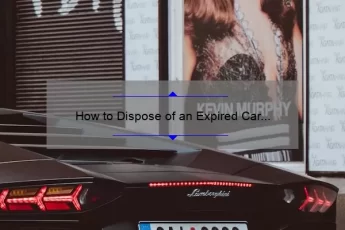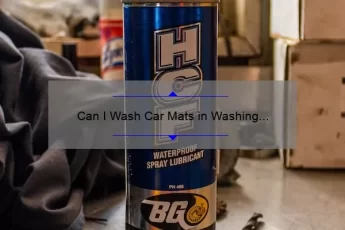In a hot car, the helium expands and may pop the balloons. To avoid this problem, make sure the car is air-conditioned. Also, keep the balloons in the shade to reduce their float time. It is also essential to avoid the use of water to cool the balloons.
Leaving helium balloons in a hot car
Leaving helium balloons in parked cars is a big no-no. The balloons will expand and pop and can also be hazardous to breathe if they leak. This is why it is essential to remove balloons from parked cars quickly. If you want to avoid this problem, try to leave balloons in cool places instead of in hot cars.
One way to avoid this is by placing them in plastic bags and placing them in the backseat of your car. If you leave them in a hot car, ensure the air conditioning is set low, so they do not lose air. If you leave balloons in parked cars, ensure they are removed from the vehicle before leaving.
Helium balloons are sensitive to temperature. When they are cold, they shrink, while when they are hot, they expand. The temperature can affect both gases, but helium is more vulnerable. It also loses energy when it is cold. It can also get dirty and lose its helium.
One problem that can occur when leaving helium balloons in a hot vehicle is that the air molecules in the car become heavier than the air surrounding the balloon. This causes the balloon to rise. As the air around the balloon is displaced, the helium will move to the right.
Leaving helium balloons in parked cars is a big no-no. Even if you’re traveling with your kids, you want to avoid ending up with a vehicle filled with drooping balloons. Helium balloons are not meant to be left in hot cars. They should be transported in a more excellent vehicle. They will regain their inflated status when the temperatures are lower.
This scenario is hazardous for balloons if you don’t have an emergency kit. The balloons might need help to leave the ground. The balloons need to be at least nine inches in diameter and can travel at least four meters. To avoid this issue, the balloons must be properly inflated. It’s crucial to remember that the gas will expand and deflate more rapidly than the air outside the balloon.
Keeping helium cylinders cool
When storing gas cylinders, make sure that you put them outside. This will keep the cylinders cooler and protect against freezing temperatures, which can damage the regulator and valve. Also, place a fire extinguisher near the storage area. This will prevent gas leaks from occurring inside the house.
Helium cylinders should be transported in a box labeled for consumers. The cylinder should be protected in the car or a damp area. Exposed metal can weaken and burst, causing a leak. The cylinder should also be stored upright, protecting the valve and nozzle. The temperature should not exceed 120 degrees Fahrenheit, and the area should not contain combustible materials.
Helium is a non-inflammatory gas, so storing it in a cool area is essential. It should not be exposed to high heat, as it can rupture, causing severe injuries. Helium can also displace air and can cause suffocation. Even intentionally inhaling the gas can be dangerous.
Helium cylinders must be kept cool because they have a shallow boiling point. This is necessary for MRI magnets, which require a relaxed environment to work correctly. In a hot car, the temperature of the cylinders can be dangerous.
Although helium is safe to store in a car, the temperature should remain within the safe range. This will prevent the cylinders from deflating faster than expected. It also helps to avoid leaving them inside a hot car or park. It would help if you kept them in an air-conditioned space to keep the temperature cool.
Another essential tip for the safe storage of helium cylinders is to ensure that they are installed with a burst disc. This disc prevents overpressurization and will allow the gas to escape, preventing the cylinder from exploding. Heat and flames inside a hot car can cause the gas inside the cylinder to become heated and explode.
Helium is an element that is naturally found in our environment. It is the second most common element in the universe after oxygen. It is used in balloons, fireworks, and rockets and has many other uses. It can even be used in wind tunnels and nuclear reactors.
Keeping helium cylinders away from pets
Keeping helium cylinders away in a hot car is essential to avoid leaks or other hazards. The gas canister should be stored upright and secured to prevent it from toppling. There are helium cylinder stands available for this purpose. Helium cylinders should be stored in an area with good ventilation and away from heat sources.
Keeping helium cylinders away from children and pets in a hot car is also a good idea. Helium can be dangerous if inhaled in large amounts. Asphyxia is possible if the gas is inhaled. In such a scenario, it is advisable to report the gas canister to the emergency services.
Making helium balloons last longer
If you want to prolong the life of your helium balloons, you can store them in a 6-inch plastic bin or a submersible pump. These tools are available in floral wholesalers and craft and paint stores. You can also spray the balloons with hairspray, which helps maintain the air within them without making them stiff. Another option is to use silicone lubricant, which works similarly to hairspray and is non-toxic.
Helium balloons deflate as they warm up. To prevent this from happening, you should place them in a cooler. This will prevent them from getting too hot and ensure that the balloon is properly inflated. Another solution is to store them in a balloon bag.
When left in a hot car, helium balloons will deflate and eventually pop. A 12-inch round balloon can last anywhere from eight to twelve hours. However, a high float on a 24-inch round balloon can last two to three days.
One way to extend the life of your helium balloons is to use a non-toxic, non-flammable liquid called Hi-Float. This liquid will help seal the latex surface inside the balloon. It can also help your balloons last longer in hot cars.
Hi-Float is a liquid that you can purchase at a store or online. It comes in a pump bottle that can be used to fill a balloon. You can add Hi-Float to a 9-inch balloon with a half-pump. For 11-inch balloons, use a complete pump. For 14-inch and more enormous balloons, use two or three pumps.








